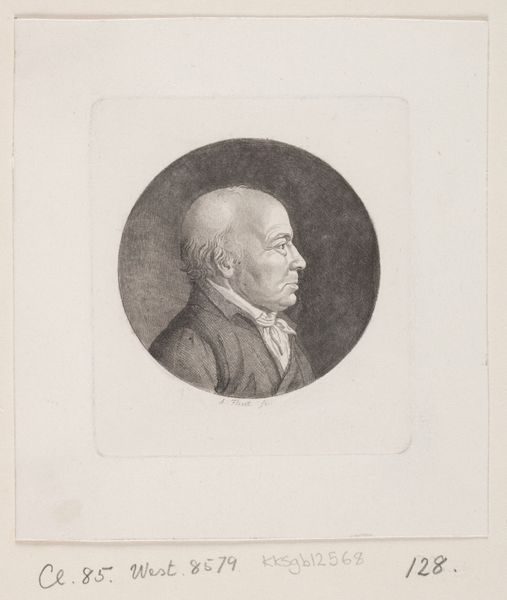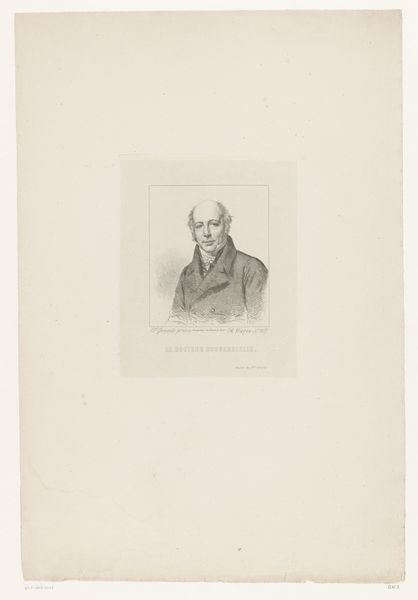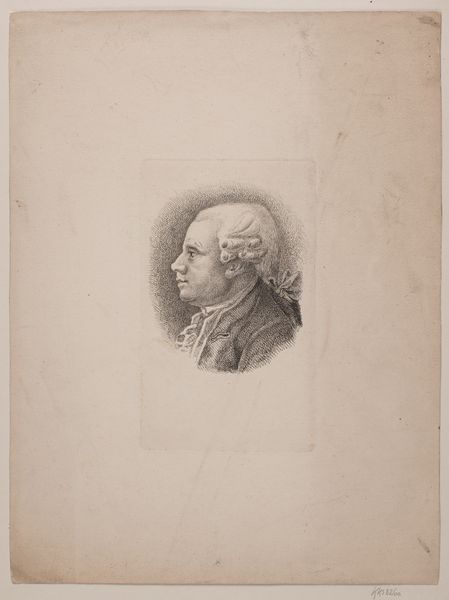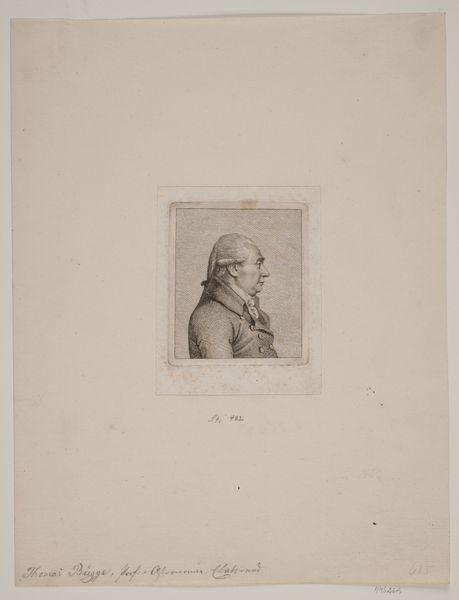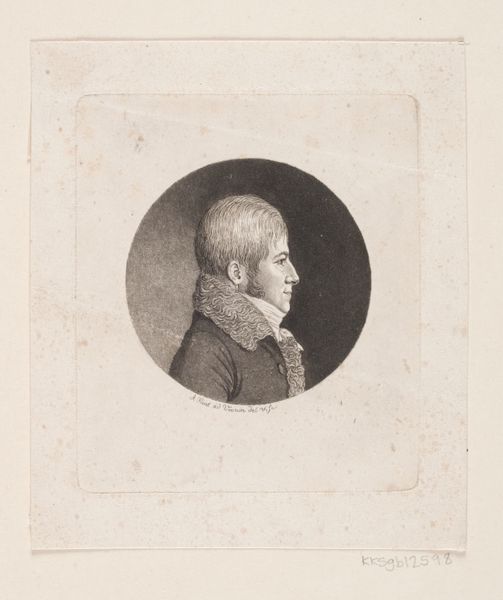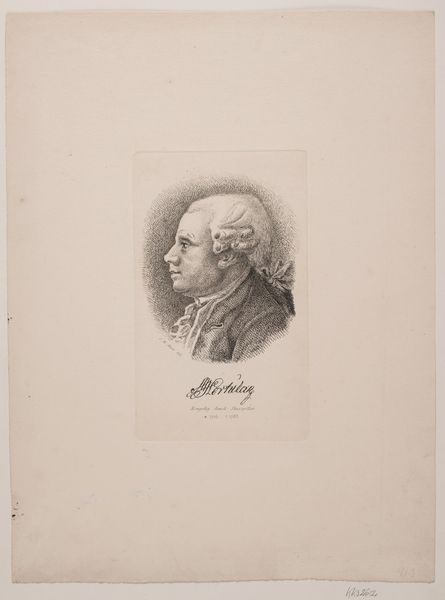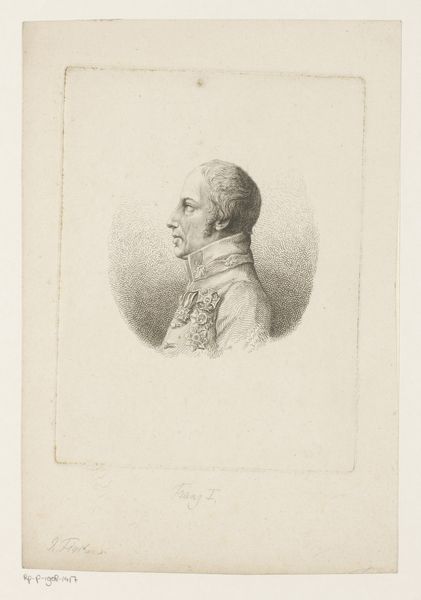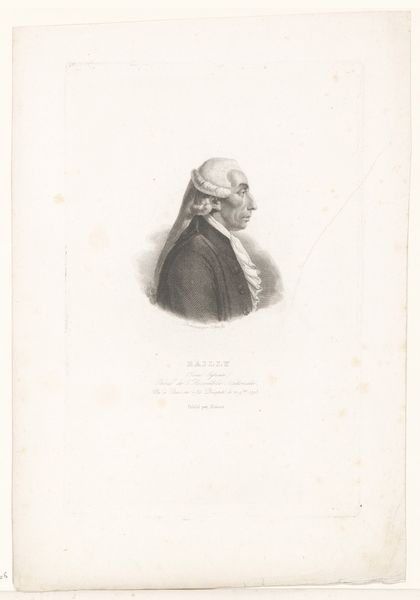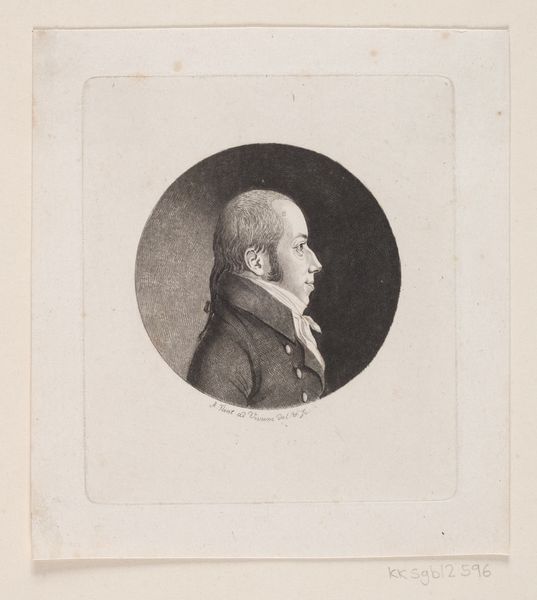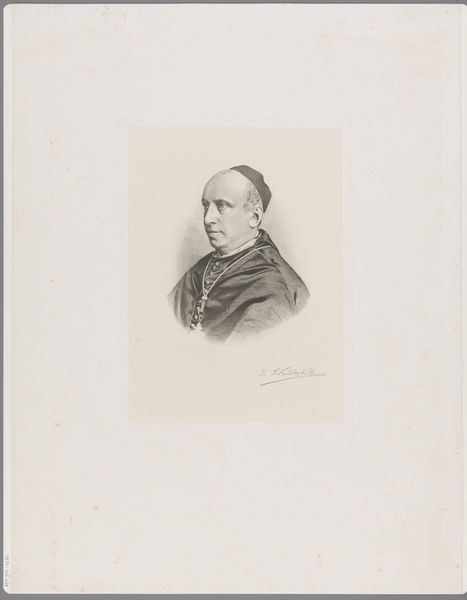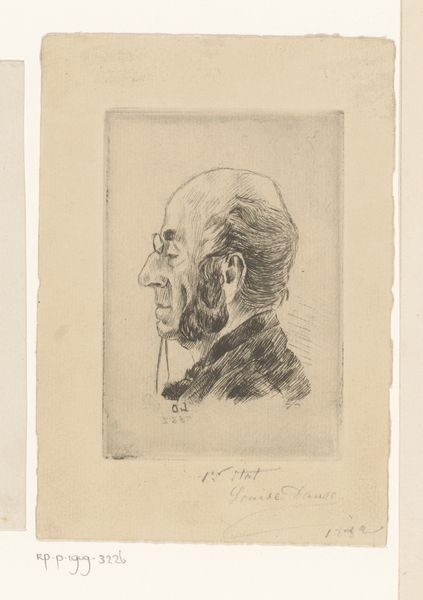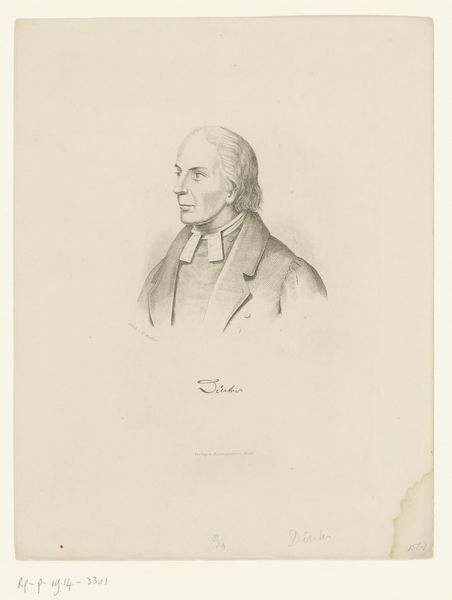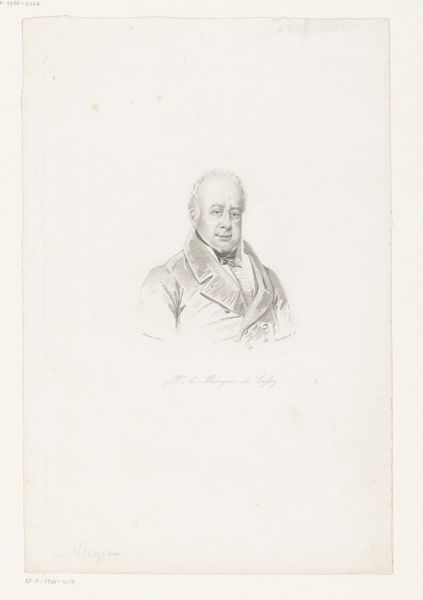
Dimensions: height 120 mm, width 70 mm
Copyright: Rijks Museum: Open Domain
Editor: Here we have a print entitled "Portret van Ernst August I, koning van Hannover," placing it somewhere between 1837 and 1899. The artist is listed as Obermüller, and it seems to be an engraving. It's a pretty austere image, just a profile portrait of a man in military regalia. What can you tell me about this piece? Curator: The starkness you observed really speaks to its function as a tool of historical memory and power. Consider the historical context: Ernst August I was a controversial figure. Examining the visual choices becomes critical. Why a print, distributed widely, instead of a unique painting? Who was the intended audience? Editor: It's interesting you bring up the 'who' and 'why.' Were prints like these often commissioned to, say, rehabilitate a ruler’s image or disseminate a specific narrative about them? Curator: Absolutely. Prints democratized imagery. A portrait wasn’t just for the wealthy elite anymore. It circulated through society, shaping public opinion, especially during times of political upheaval or when a ruler’s legitimacy was questioned. Is the stern profile meant to project authority, strength? How does Romanticism play into shaping the persona here? Editor: So, the Romantic style serves less as emotional expression, and more as a means to frame a historical figure in a particular light. The clean lines almost sanitize the subject... I hadn't considered that! Curator: Exactly. Think about the other visual signifiers of power – the uniform, medals. All designed to contribute to a very specific narrative aimed at the public. What do you think that narrative might be? Editor: That rulers are always stern figures; therefore, always to be followed. I see how analyzing it through a socio-political lens adds much depth. Thanks! Curator: And that's how history shapes art and art shapes history. It has been enriching.
Comments
No comments
Be the first to comment and join the conversation on the ultimate creative platform.
